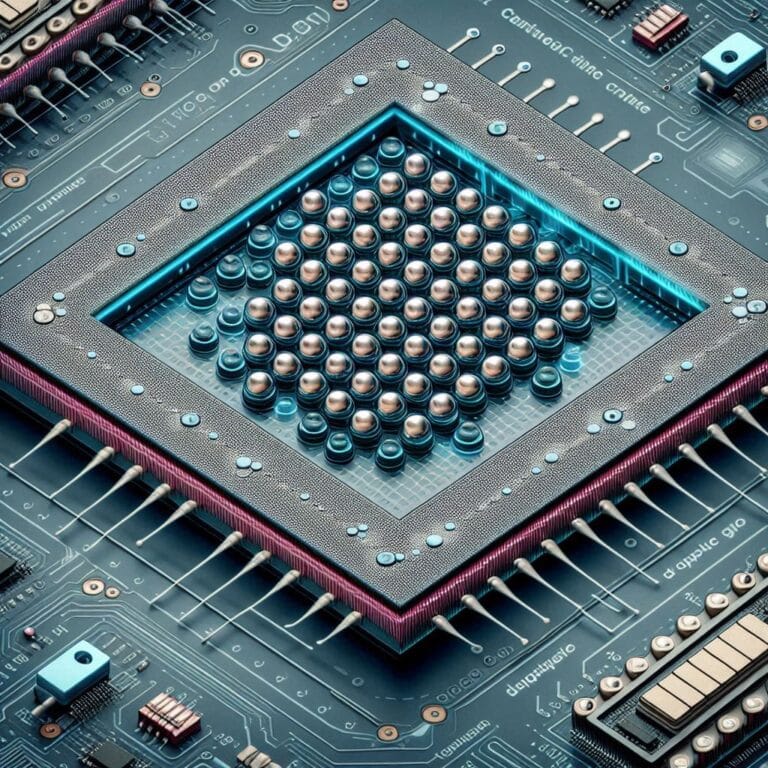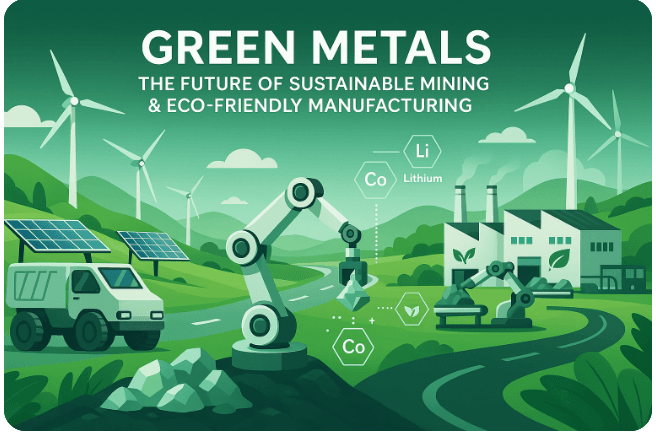Introduction: Advanced Energy Materials
What Are Advanced Energy Materials and Why Do They Matter?
Advanced energy materials refer to innovative substances engineered to enhance energy storage, generation, and efficiency. These materials are crucial in developing high-performance batteries, fuel cells, and supercapacitors, playing a significant role in sustainable energy solutions. Examples include nanomaterials, solid-state electrolytes, and next-generation catalysts that improve energy density, thermal stability, and environmental sustainability.
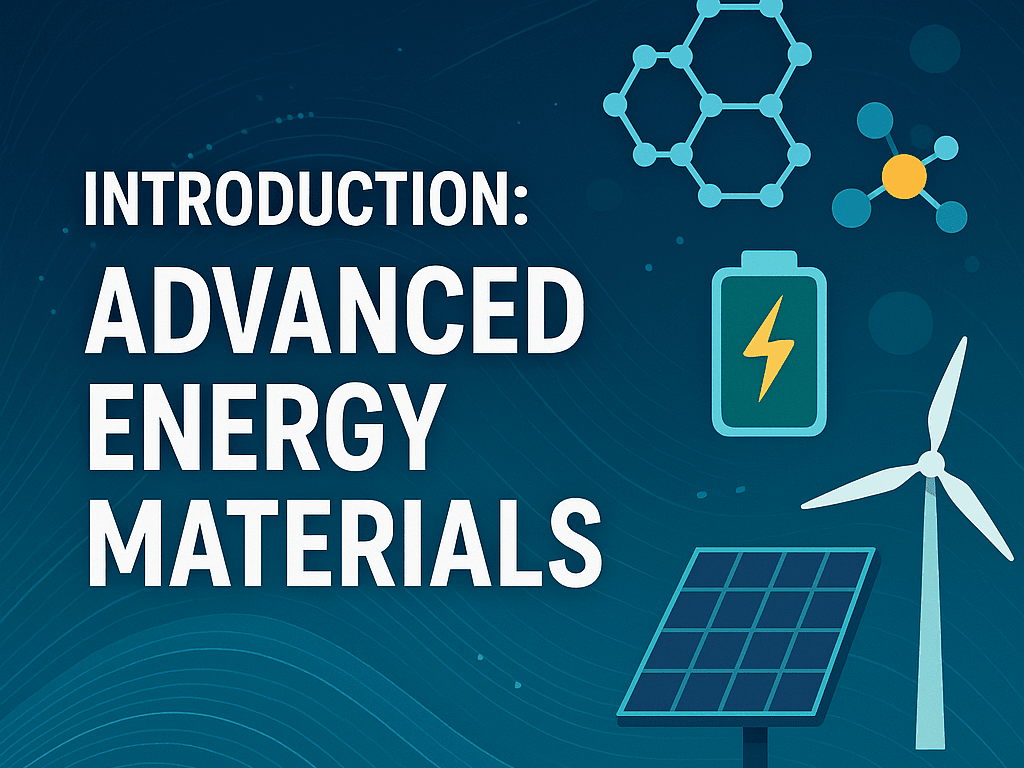
The Growing Global Energy Demand and the Role of Advanced Materials
- With worldwide electricity consumption expected to increase by over 50% by 2050, driven by industrialization, electric vehicles (EVs), and AI-driven data centers, the need for efficient and scalable energy storage solutions has never been greater.
- Conventional energy storage technologies, such as lithium-ion batteries, face limitations in performance, resource availability, and environmental impact. Advanced materials aim to overcome these issues by offering better efficiency, longer lifespan, and reduced dependency on scarce elements like cobalt and nickel.
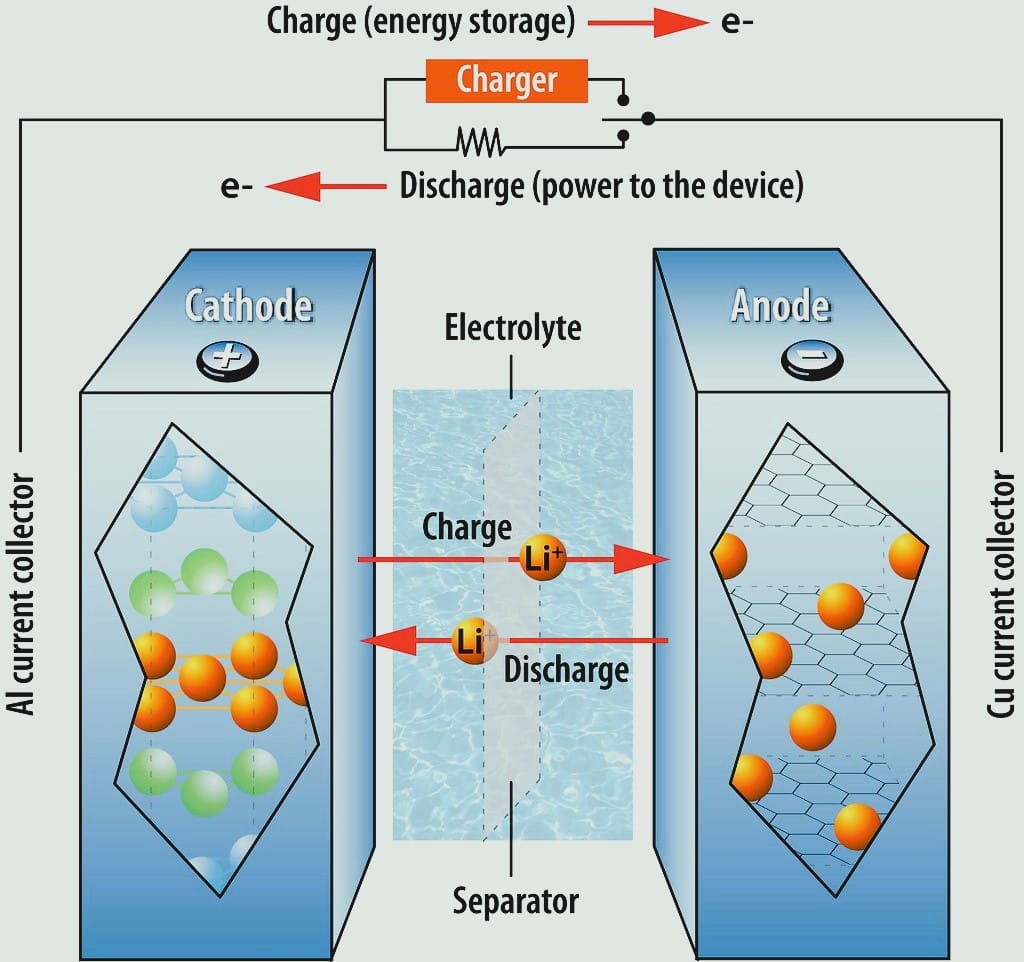
- These materials enable better energy conversion and storage, making renewable sources like solar and wind more reliable by reducing intermittency issues.
Nanomaterials: The Game Changer in Energy Storage and Efficiency
- Graphene and Carbon Nanotubes: Used in next-generation batteries and supercapacitors to enhance conductivity and charge storage.
- Metal-Organic Frameworks (MOFs): Improve hydrogen storage and fuel cell efficiency, advancing clean energy technologies.
- Phase-Change Materials: Enhance thermal energy storage in smart grids and sustainable construction.
- Solid-State Electrolytes: Address safety concerns of traditional lithium-ion batteries while boosting energy density and cycle life.
Why Advanced Energy Materials Are the Future of Sustainable Power
- Higher Energy Efficiency: Advanced materials optimize charge retention and minimize power loss in transmission.
- Eco-Friendly Energy Solutions: Innovations in material science reduce reliance on toxic and rare materials, supporting circular economy models.
- Integration with Renewable Energy: Energy storage breakthroughs help smooth fluctuations in solar and wind power supply.
- Cost and Performance Benefits: Although initial costs may be high, the extended lifespan and improved efficiency of these materials result in long-term savings.
Understanding Advanced Energy Materials
Definition and Significance of Advanced Energy Materials
Advanced energy materials are innovative materials designed to improve energy storage, conversion, and efficiency. These materials play a crucial role in reducing energy loss, increasing battery lifespan, and enabling the adoption of sustainable energy sources. Their significance lies in their ability to enhance renewable energy systems, optimize high-performance energy storage, and contribute to the development of next-generation energy solutions.
Types of Energy Materials
These materials encompass a wide range of cutting-edge materials used in energy storage and conversion applications:
Conductive Polymers
- Organic materials that offer high electrical conductivity and flexibility.
- Used in supercapacitors and flexible batteries, improving durability and charge-discharge rates.
Graphene-Based Energy Materials
- Graphene, a single layer of carbon atoms, is known for its high conductivity and mechanical strength.
- Applied in lithium-ion batteries and supercapacitors for enhanced energy storage efficiency.
- Reduces weight while improving charge storage capacity.
Metal-Organic Frameworks (MOFs)
- Porous materials with high surface area and tunable properties.
- Used for hydrogen storage, CO₂ capture, and battery electrolytes.
- Improves energy density and ion transport in advanced batteries.
Superconductors for Energy Applications
- Materials that conduct electricity without resistance, reducing energy loss in power grids.
- Applied in fusion energy projects and ultra-efficient electrical transmission.
Comparison with Traditional Materials & Efficiency Improvements
Compared to conventional materials, advanced energy materials offer:
✅ Higher Energy Density – Enables longer-lasting batteries and supercapacitors.
✅ Greater Durability – Reduces degradation and cycle loss, improving longevity.
✅ Faster Charge Rates – Supports rapid energy storage and release for high-power applications.
✅ Eco-Friendly Innovations – Many materials support clean energy transitions, such as MOFs for CO₂ capture and graphene for energy-efficient devices.
These materials outperform traditional energy solutions and are driving innovations in solar cells, batteries, and energy-efficient storage systems. Their widespread adoption is expected to revolutionize the future of energy sustainability.
The Role of Advanced Energy Materials in Modern Technology
The Growing Need for Advanced Energy Solutions
- With increasing global energy consumption, the demand for next-generation battery technologies and supercapacitor energy storage is rising.
- Advanced energy materials are crucial for improving efficiency, longevity, and sustainability in modern energy systems.
- Innovations in battery, solar cell, and fuel cell technologies are revolutionizing energy storage and conversion.
Batteries: The Shift Beyond Traditional Lithium-Ion
Solid-State Batteries:
- Offer higher energy density, improved safety, and longer lifespan than lithium-ion batteries.
- Companies like QuantumScape and Toyota are leading breakthroughs in commercialization.
Sodium-Ion Batteries:
- A promising alternative to lithium-ion, using abundant sodium rather than scarce lithium.
- Northvolt’s sodium-ion batteries are achieving 160 Wh/kg, comparable to lithium iron phosphate (LFP) batteries, but at a lower cost and with enhanced sustainability.
- Researchers are developing Prussian White cathodes and biowaste-derived anodes, reducing reliance on nickel, cobalt, and graphite.
Prismatic Battery Cells:
- Companies like Cornex are pushing the next wave of battery technology, introducing LFP battery cells with capacities from 100 Ah to 700 Ah, reshaping large-scale energy storage.
- Used in electric vehicles and grid storage, offering higher efficiency and durability.
Solar Cells: Perovskite Revolution and Tandem Cells
Perovskite Solar Cells:
- Faster and cheaper to produce than traditional silicon cells.
- Tandem perovskite-silicon modules recently achieved 808 W peak power, showing significant efficiency gains.
Next-Generation Photovoltaics:
- Quantum dot solar cells and organic PVs are improving efficiency while reducing costs.
- AI-based optimization of solar cell structures enhances performance and scalability.
Fuel Cells: The Future of Clean Hydrogen Energy
Hydrogen Fuel Cells:
- Advancements in proton exchange membrane (PEM) and solid oxide fuel cells (SOFCs) are increasing efficiency.
- Companies are developing hydrogen storage solutions for long-term energy security.
Biofuel Cell Technologies:
- Utilizing microbial fuel cells and enzymatic reactions to generate energy from organic matter.
- Enhancing performance through nanomaterial-based electrodes for higher energy conversion efficiency.
Breakthrough Discoveries in Advanced Energy Materials
Nanotechnology in Energy Storage: Unlocking Higher Energy Density
Nanomaterials are playing a transformative role in energy storage technologies, enabling higher energy densities and improved charge/discharge rates. Researchers are exploring 2D materials like MXenes and graphene, which offer high electrical conductivity and large surface areas, making them ideal for use in batteries and supercapacitors. Recent studies have also highlighted the role of transition-metal oxides in improving ion transport within nanostructures, which directly impacts battery efficiency.
- Why it matters: Nanotechnology allows for more compact, efficient, and longer-lasting energy storage solutions, essential for renewable energy grids and electric vehicles (EVs).
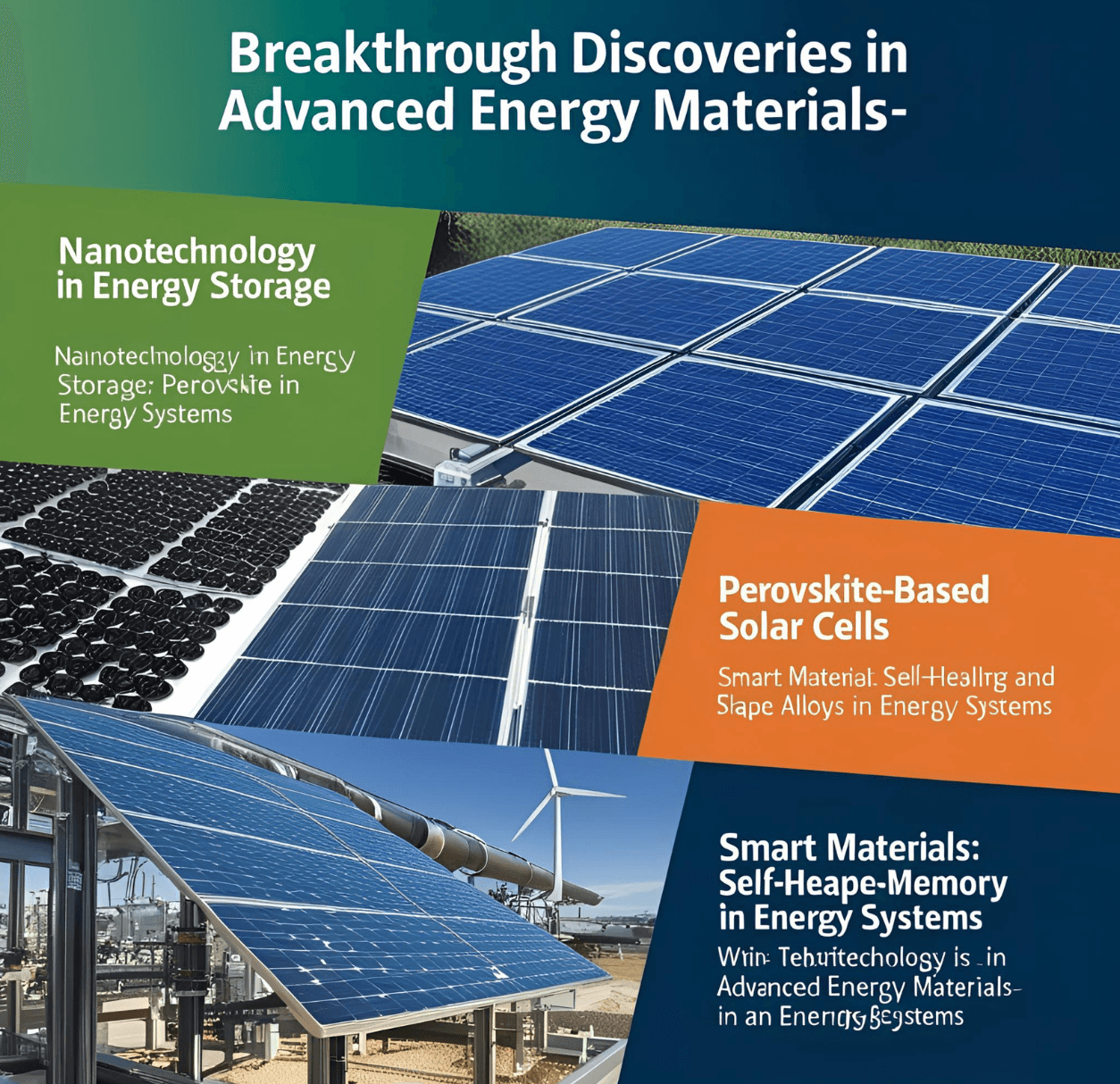
Perovskite-Based Solar Cells: The Future of Renewable Energy?
Perovskite solar cells have emerged as a game-changer in photovoltaics, offering higher efficiency and lower production costs compared to traditional silicon-based solar cells. Recent breakthroughs focus on stabilizing perovskite materials, making them more durable and commercially viable. Some studies indicate that integrating nanomaterials into perovskite structures enhances their efficiency and longevity.
- Why it matters: As solar energy adoption increases, perovskite-based solar panels can significantly reduce the cost of renewable electricity, making them a key player in sustainable energy.
Smart Materials: Self-Healing and Shape-Memory Alloys in Energy Systems
The development of smart materials—such as self-healing polymers and shape-memory alloys—is creating new possibilities in energy storage and efficiency.
- Self-healing materials can repair micro-cracks in batteries, extending their lifespan and performance.
- Shape-memory alloys can be used in thermally adaptive systems, where they change their properties based on environmental conditions, improving energy efficiency in electronics and infrastructure.
Bridging the Research Gap: What’s Next for Advanced Energy Materials?
Future research is focusing on bio-inspired nanomaterials that mimic natural energy processes to create highly efficient energy systems. Scientists are also working on 3D-printed energy materials that allow for custom designs in batteries and supercapacitors, enhancing performance and sustainability.
By integrating nanomaterials, smart materials, and next-gen solar cells, researchers are pushing the boundaries of energy efficiency and sustainability. These advancements will define the next era of energy storage, conversion, and consumption, making clean energy more accessible and reliable worldwide.
Industrial & Commercial Applications of Advanced Energy Materials
As industries and businesses strive for energy efficiency and sustainability, advanced energy materials are playing a crucial role in transforming various sectors. These materials contribute to the development of high-performance energy storage systems, enabling greater efficiency, durability, and sustainability in modern applications.
- Electric Vehicles (EVs): Advancements in Battery Performance
- The EV industry is heavily reliant on high-performance energy storage solutions. Recent developments in lithium-ion and solid-state battery technologies have significantly improved energy density, charging speed, and lifespan.
- Companies are integrating nanomaterials and metal-organic frameworks (MOFs) to enhance battery conductivity and thermal stability, reducing overheating issues.
- The use of silicon anodes, lithium-sulfur batteries, and sodium-ion alternatives is pushing EV battery technology towards greater efficiency and cost-effectiveness.
- Smart Grids & IoT: The Backbone of Next-Gen Power Distribution
- Smart grids rely on advanced energy materials for energy-efficient transmission and distribution. These grids use next-gen superconductors and graphene-based conductors to reduce energy losses.
- The Internet of Things (IoT) integrates AI-powered energy management systems that optimize power distribution, reducing wastage and increasing reliability.
- Innovations in flow batteries and solid-state batteries help smart grids store excess renewable energy and release it when needed, improving grid stability.
- Wearable & Portable Electronics: Revolutionizing Consumer Technology
- With the increasing demand for compact, high-performance energy storage solutions, flexible and stretchable batteries are being developed using advanced polymers and nanomaterials.
- Graphene-based supercapacitors enable ultra-fast charging for wearables like smartwatches, medical devices, and fitness trackers.
- Wireless charging technology is evolving with new materials that enhance inductive and resonant charging efficiency, allowing for seamless power transfer.
The Future of Industrial Applications
The impact of advanced energy materials extends beyond these industries, influencing aerospace, defense, medical devices, and even space exploration. As research continues, innovations in sustainable battery chemistries, AI-driven energy optimization, and bio-inspired materials will define the next phase of industrial evolution.
Future Trends & Challenges
Challenges in Advanced Energy Materials
- High Production Costs: Many sustainable energy materials such as graphene-based energy materials and metal-organic frameworks (MOFs) require expensive raw materials and complex manufacturing processes, making large-scale production a challenge.
- Scalability & Commercialization Barriers: Despite laboratory success, bringing new materials to mass production requires overcoming hurdles in material consistency, durability, and supply chain logistics.
- Material Stability & Degradation: Many advanced materials, such as perovskites in solar cells and nanomaterials in batteries, degrade over time, affecting long-term performance and efficiency.
- Resource Scarcity & Environmental Impact: Extracting raw materials for high-performance energy storage can lead to ecological concerns. Sustainable alternatives like bio-inspired materials and recycling strategies are being explored.
- Regulatory & Safety Concerns: Innovations in sustainable energy materials need to comply with strict safety and environmental regulations, which can slow down implementation.
Future Innovations in Advanced Energy Materials
- AI-Driven Material Discovery: Artificial Intelligence and machine learning are being used to design new high-performance energy storage materials by predicting optimal compositions and accelerating testing.
- Graphene-Enhanced Energy Solutions: Graphene-based energy materials are advancing energy storage technologies, improving battery lifespan, and enabling ultra-fast charging for electric vehicles (EVs).
- Quantum Dots & Perovskites for Solar Cells: Quantum dot technology is enhancing the efficiency of sustainable energy materials by enabling better light absorption in solar panels.
- Hybrid Battery Technologies: Lithium-sulfur and sodium-ion batteries combined with graphene-based energy materials are expected to replace traditional lithium-ion batteries, offering greater energy density at lower costs.
- Recycling & Green Chemistry Approaches: Circular economy initiatives focus on recycling energy materials to reduce dependence on finite resources and minimize environmental impact.
Conclusion
- The Future of Energy is Advanced Materials: From next-generation battery technologies to AI-driven material design, the shift toward advanced energy materials is shaping a sustainable energy future.
- Collaboration is Key: Governments, researchers, and private industries must collaborate to accelerate innovations in advanced energy materials and ensure practical implementation.
- Investment in Sustainability: Increased funding in next-generation battery technologies and eco-friendly materials will drive a cleaner and more resilient energy landscape.
The breakthroughs in sustainable energy materials are paving the way for a cleaner, more efficient, and cost-effective energy future.
Explore More on Cutting-Edge Energy Innovations:
If you found this article on Advanced Energy Materials insightful, you’ll love diving deeper into these fascinating topics:
-
What is Graphene? A One-Atom-Thick Marvel – Discover how this extraordinary material is revolutionizing energy storage and electronics.
-
Graphene Biosensors Explained – Learn how graphene-based biosensors are transforming healthcare and environmental monitoring.
-
Microbial Fuel Cells as Off-Grid Energy Solutions – Explore how microbes can generate sustainable electricity in remote areas.
-
Self-Assembling Materials for a Nanotechnology Future – See how self-assembling materials are paving the way for advanced nanotech applications.
Stay ahead in the world of energy innovation—check out these articles now!


